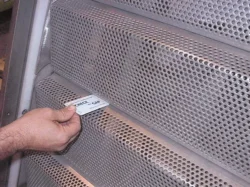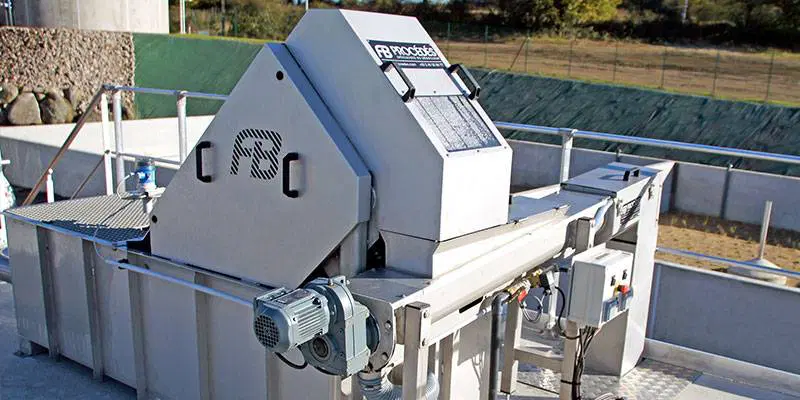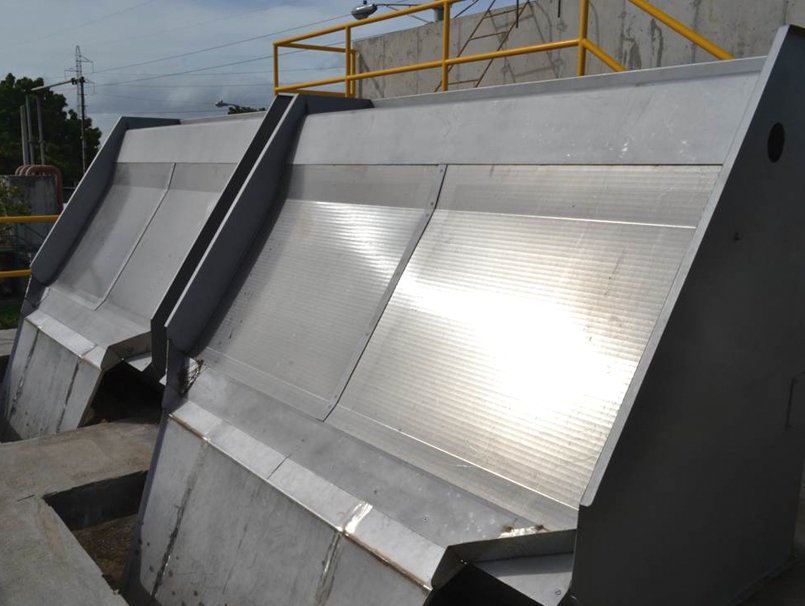
Huber Perforated Plate Screen
The Huber Perforated Plate Screen: An In-Depth Analysis
When it comes to the treatment and management of wastewater, the importance of preliminary screening cannot be overstated. One of the key players in this phase is the Huber Perforated Plate Screen. This article aims to provide a comprehensive and expansive study on the engineering marvel that is the Huber Perforated Plate Screen, detailing its technological innovations, functional efficacy, applications, and benefits.
Introduction to Wastewater Screening
The Need for Screening
Wastewater treatment is a multi-phase process designed to remove contaminants from water, making it suitable for discharge into the environment or for further purification and reuse. One of the first steps in this arduous process is screening, which involves removing large solids and debris that could potentially damage downstream equipment or impede subsequent treatment processes.
Types of Screening Methods
Several types of screens are employed in wastewater treatment facilities, including bar screens, drum screens, and perforated plate screens. Among these, perforated plate screens, particularly the Huber Perforated Plate Screen, stand out due to their efficiency and versatility.
What is the Huber Perforated Plate Screen?
Design and Construction
The Huber Perforated Plate Screen is a sophisticated piece of machinery designed for the fine screening of wastewater. It is constructed from stainless steel, ensuring both durability and resistance to corrosion. The screen features a perforated plate with multiple holes that can vary in size, depending on the specific needs of the application.
Technological Innovations
One of the most commendable aspects of the Huber Perforated Plate Screen is its incorporation of advanced technology. Key innovations include:
-
- Automated Cleaning Systems: The screen is equipped with automated cleaning brushes and scrapers. This ensures continuous operation and reduces the need for manual intervention, which can be labor-intensive and costly.
-
- Variable Speed Drives: The screen’s operation can be easily adjusted to manage varying loads and flow rates, optimizing its performance.
-
- Backwashing Mechanism: A backwashing system is often integrated to further enhance the cleaning process, ensuring the screen remains unclogged and fully functional.
Functional Efficacy
The efficacy of the Huber Perforated Plate Screen lies in its ability to screen out fine particles that other types of screens might miss. The perforated plate is available in a variety of hole sizes, typically ranging from 1 to 6 mm, making it suitable for a wide range of applications.
Applications of the Huber Perforated Plate Screen
Municipal Wastewater Treatment
One of the primary applications of the Huber Perforated Plate Screen is in municipal wastewater treatment plants. These facilities handle vast amounts of domestic sewage, and the Huber screen is instrumental in removing various types of debris, including plastics, fibers, and organic matter.
Industrial Wastewater Treatment
Industries generate wastewater that contains different types of contaminants, often more complex and variable than those found in municipal sewage. The robustness and adaptability of the Huber Perforated Plate Screen make it ideal for industrial applications. Common industries that benefit from this screening technology include:
-
- Food and Beverage: Removal of organic solids to reduce biological oxygen demand.
-
- Textile: Capture of fibers and other particulate matter.
-
- Chemical: Screening of heterogeneous waste streams to protect downstream processes.
Protection of Downstream Processes
Beyond initial screening, the Huber Perforated Plate Screen also serves to protect sensitive downstream equipment like pumps, valves, and membranes from damage or clogging. By removing larger solid materials at the early stages, the longevity and efficiency of the entire wastewater treatment system are greatly increased.
Installation and Maintenance
Installation Considerations
Installation of the Huber Perforated Plate Screen requires a well-planned approach. Factors to consider include:
-
- Location: The screen should be installed at a point where it can effectively intercept incoming wastewater.
-
- Flow Rate: The capacity of the screen must align with the facility’s average and peak flow rates.
-
- Support Infrastructure: Adequate space and support infrastructure, such as channels and access points for maintenance, must be provided.
Maintenance Requirements
While the Huber Perforated Plate Screen is designed to minimize maintenance needs, routine checks and cleanings are essential to ensure optimal performance. Key maintenance considerations include:
-
- Inspection: Regular inspection of the screen for signs of wear and tear.
-
- Cleaning Mechanisms: Ensuring that automated brushes and backwashing systems are functioning correctly.
-
- Lubrication: Regular lubrication of moving parts to reduce friction and wear.
Advantages of Huber Perforated Plate Screen
High Screening Efficiency
One of the standout benefits of the Huber Perforated Plate Screen is its high screening efficiency. The precision-engineered perforations ensure that even fine particles are captured, thereby enhancing the overall quality of the treated water.
Cost Savings
The automated cleaning mechanisms and robust construction of the Huber Perforated Plate Screen facilitate significant cost savings. Reduced manual maintenance, fewer repairs, and a longer operational lifespan contribute to lower overall operational costs.
Environmental Benefits
Effective screening leads to improved overall efficiency of the wastewater treatment process, resulting in cleaner effluent that poses less risk to aquatic ecosystems. Furthermore, the robust construction and long lifespan of the screen mean fewer replacements and less waste, aligning with sustainability goals.
Versatility
The Huber Perforated Plate Screen is highly versatile, capable of handling various wastewater types from different sources. Whether used in a municipal facility or an industrial plant, its adaptability ensures reliable performance.
Challenges and Solutions
Debris Overload
In situations where the incoming wastewater contains an unusually high amount of debris, the screen may face challenges in maintaining its efficacy. This is particularly true for facilities that process stormwater, where the variability in debris load can be substantial.
Solution
To address this, additional measures such as pre-treatment with coarse screens or the integration of redundancy systems (multiple screens in parallel) can be employed. These measures can help distribute the load, ensuring continued optimal performance of each screen.
Biofouling
Biofouling, the accumulation of microorganisms on the screen surfaces, can reduce the screening efficiency over time. It is a common issue in wastewater treatment systems but can be particularly problematic for fine screens due to their smaller apertures.
Solution
Regular backwashing and the use of anti-fouling coatings can mitigate the impact of biofouling. Moreover, automated cleaning systems that are robust enough to handle biological debris should be employed to maintain efficiency.
Energy Consumption
Automated systems and machinery typically consume energy, and the Huber Perforated Plate Screen is no exception. While efficient, the energy demands can accumulate, affecting the overall operational costs and sustainability goals.
Solution
The incorporation of variable speed drives and energy-efficient motors can help reduce the energy footprint of the Huber Perforated Plate Screen. Energy recovery systems can also be explored to make the process more sustainable.
Case Studies
Case Study 1: Municipal Wastewater Treatment Plant
A municipal wastewater treatment plant in Germany installed the Huber Perforated Plate Screen to replace their aging bar screen system. The plant experienced immediate benefits, including:
-
- Improved Screening Efficiency: With its fine perforations, the screen captured more debris than the previous system, leading to better water quality.
-
- Reduced Maintenance Costs: Automated cleaning mechanisms significantly reduced the need for manual intervention.
-
- Extended Equipment Life: Lower levels of debris reaching downstream processes helped protect pumps and other equipment, extending their operational life.
Case Study 2: Food and Beverage Industry
A food processing plant in the United States faced challenges with organic solid waste clogging their wastewater treatment system. With the installation of the Huber Perforated Plate Screen, the plant observed:
-
- Efficient Removal of Organic Solids: This led to a reduction in the biological oxygen demand (BOD) of the wastewater, making subsequent treatment processes more efficient.
-
- Lower Operational Costs: Reduced clogging and lower maintenance requirements translated to significant cost savings.
-
- Compliance with Environmental Regulations: The improved screening allowed the plant to meet stringent discharge standards, avoiding fines and enhancing their reputation.
Future Prospects
Technological Advancements
The field of wastewater treatment is continually evolving, with ongoing research aimed at improving the efficiency and sustainability of treatment processes. For the Huber Perforated Plate Screen, future prospects include:
-
- Smart Sensors: Integration of IoT-enabled sensors for real-time monitoring and predictive maintenance.
-
- Advanced Materials: Use of next-generation materials that offer even greater durability and resistance to fouling.
-
- Enhanced Automation: Developing more sophisticated automated systems that can adapt to varying conditions and optimize performance autonomously.
Expanding Applications
As industries and municipalities seek more efficient and effective wastewater treatment solutions, the demand for high-performance screening technologies like the Huber Perforated Plate Screen is expected to grow. Emerging applications could include:
-
- Stormwater Treatment: Adapting the screen for more dynamic and variable debris loads.
-
- Decentralized Water Treatment Systems: Employing the screen in smaller, decentralized wastewater treatment units.
-
- Upgradation of Existing Facilities: Retrofitting older facilities with advanced screening solutions to enhance their performance.
Conclusion
The Huber Perforated Plate Screen is a technological innovation that addresses the critical needs of preliminary wastewater treatment with remarkable efficiency and versatility. Its robust construction, advanced automation, and high screening efficacy make it an invaluable component for both municipal and industrial wastewater treatment facilities.
While challenges such as debris overload, biofouling, and energy consumption exist, the available solutions and ongoing advancements ensure that these obstacles are surmountable. Moreover, with the expanding realms of application and future technological prospects, the Huber Perforated Plate Screen is poised to remain at the forefront of wastewater treatment technologies.
By investing in such advanced screening systems, facilities can not only improve their operational efficiency and reduce costs but also contribute significantly to environmental sustainability. The Huber Perforated Plate Screen stands as a testament to the remarkable engineering and relentless innovation that drive the wastewater treatment industry forward.


